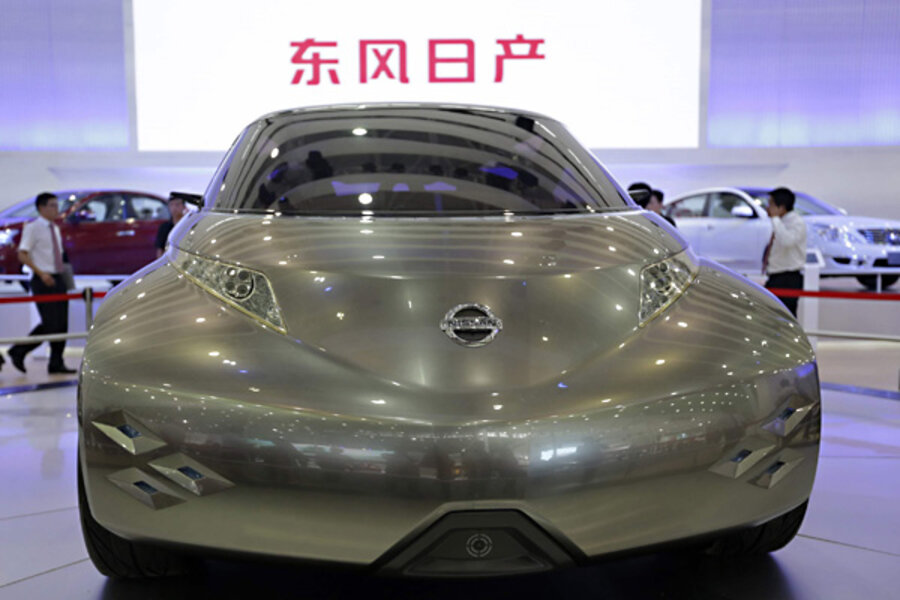Braking, now steering: Is Nissan driving for us?
Loading...
Nissan has been on a high-tech run the past several days. On Friday, the automaker announced its "Emergency Assist for Pedal Misapplication" system, which can apply the brakes when drivers hit the gas by mistake. And on Monday, we heard about a new rear-facing camera on the 2013 Altima that warns of lane-departures, watches your blind spot, and, of course, serves as a backup camera.
Now, Nissan has debuted yet another high tech feature: the "Autonomous Emergency Steering System", which brings us one step closer to fully self-driving vehicles.
How it works
We've all been in situations where we've been forced to hit the brakes because traffic has suddenly come to a stop or because a slower driver has jumped into our lane. Occasionally, we've even had to swerve to the side of the road or into another lane to avoid rear-ending the car in front of us. These are terrifying, life-flashing-before-your-eyes kind of moments.
Nissan's Autonomous Emergency Steering System doesn't make such situations any less harrowing, but it can handle all that braking and steering on its own. And since the system can never be distracted by text messages or spills of hot coffee, it's always on the lookout for danger -- meaning that it may notice problems earlier and bring your car to a more gentle stop.
The Autonomous Emergency Steering System relies on one radar/camera combo up front, two radar detectors on the sides, and five laser scanners strategically placed around the vehicle. When the system identifies a problem ahead that requires immediate braking, it checks for obstacles in front, alongside, and behind the vehicle, then shows the driver where he or she ought to steer.
That in itself isn't too different from the brake-assist safety devices currently found on other vehicles. The difference in Nissan's case is that if the driver doesn't respond -- perhaps because of a distraction, a medical emergency, or dozing off -- the system will take over and steer the vehicle to safety.
Nissan's Vision Zero
Like its Emergency Assist for Pedal Misapplication, the Autonomous Emergency Steering System is part of Nissan's Vision Zero safety plan, which aims to eliminate most traffic fatalities and injuries by the year 2025. In Japan, the U.S., and the U.K., the program is well ahead of schedule.
Unlike Emergency Assist, though, Nissan has given no indication when or where the Autonomous Emergency Steering System might first appear. It's possible that it, too, may debut in Japan on the Nissan Elgrand luxury van, then roll out to other markets and models.
From where we sit, Nissan's Autonomous Emergency Steering System moves us step further down the road toward fully autonomous vehicles. Does it interest you? Is it the sort of thing you'd be willing to purchase as part of a safety package upgrade? Let us know in the comments below -- and be sure to check out our first-hand report on this technology at our sister site, Motor Authority.







